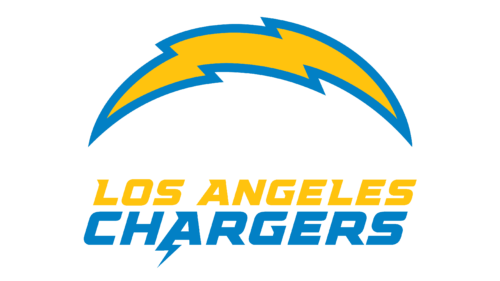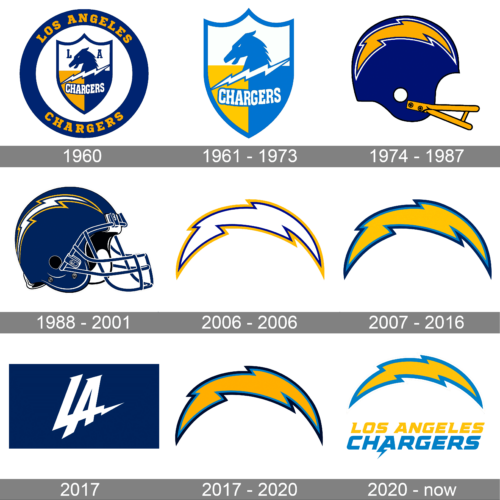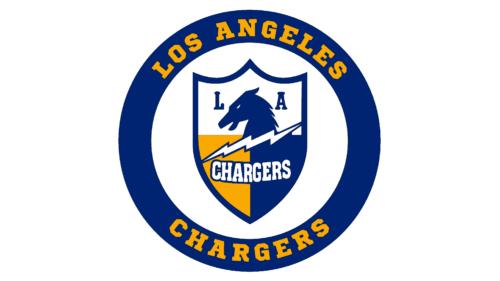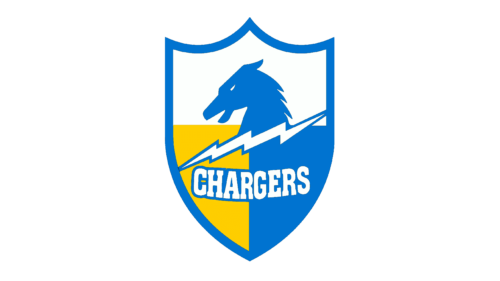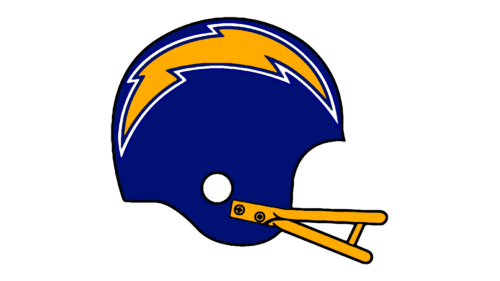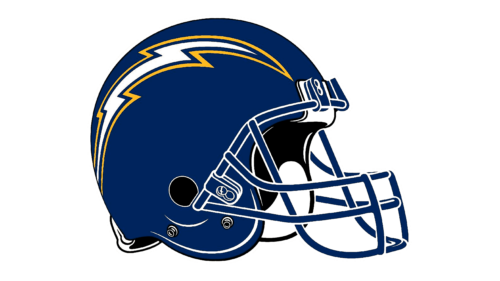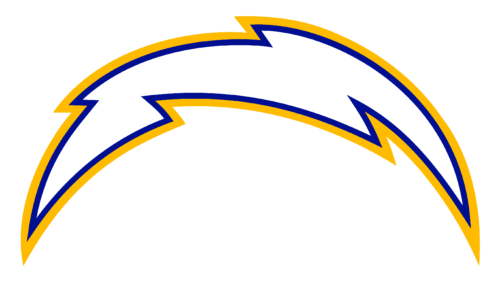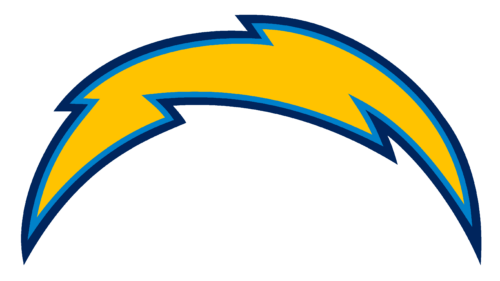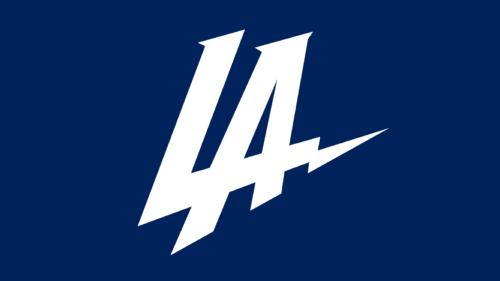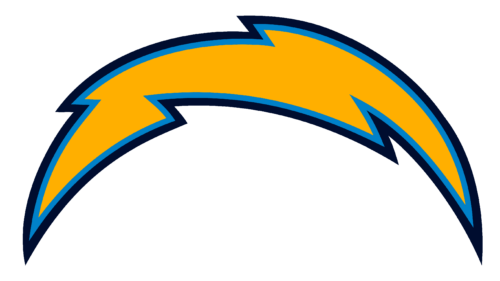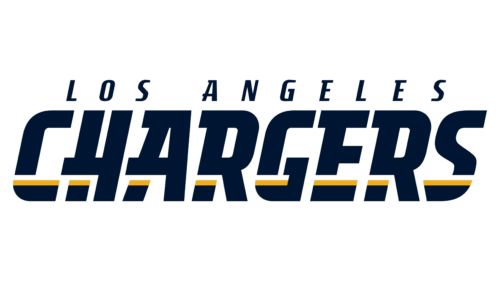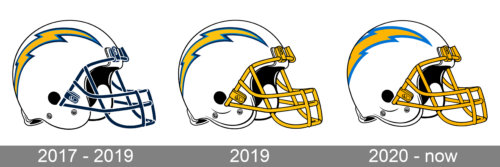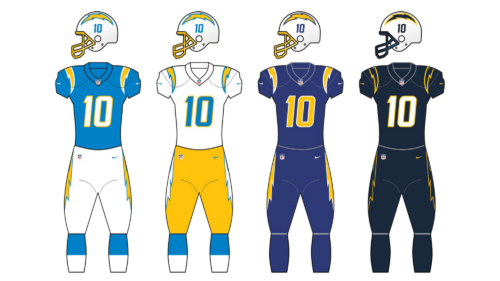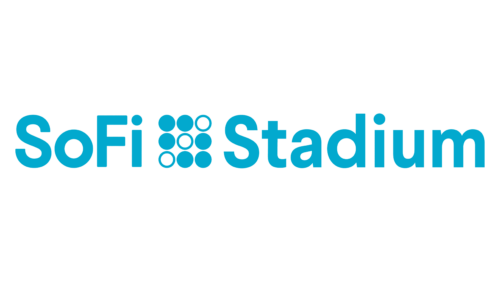Los Angeles Chargers is a professional football club from the United States, which was established in Los Angeles in 1960, but for the most part of its history played in San Diego. The team came back to its homeland in 2017, switching its name back from San Diego Chargers
Brand Overview
After a successful debut AFL season by the Chargers in 1960, the team was having a tough time. The move clearly affected the mood of the players and managerial staff. Already in 1961, Frank Leigh leaves the club, and the new manager becomes Syl Gillman, who at that time was already the Charger’s head coach.
The team has a brilliant first season in San Diego, but 1962 was one big year of injuries and defeats. However, one year later the team regained the Western Division title and reclaimed it in 1964. This continued until the merger of the AFL and NFL in 1970.
The Chargers’ first season in the new league was an utter failure. New players, and changes in the coaching staff, all led to the San Diego Chargers not having a single bright season until 1978.
In 1979 Don Coryell became head coach of the club and started a new decade in the history of the club with a winning streak. However, by the late 1980s and early 1990s, the Chargers once again show a highly unstable game.
After Bobby Ross joined the club, the Chargers became AFC champions in 1994, and in 1995 the team finally made it to the Super Bowl. Unfortunately, the team failed to win, and it greatly affects the mood of the players, leading to a stagnation in Chargers games that lasted until the early 2000s.
With the arrival of a new coach to the club in 2002, the San Diego Chargers start winning again. But it did not last long. The coaches changed frequently, but the club did not show impressive results. And that led to the club management deciding to move back to Los Angeles in 2017.
Meaning and history
The Los Angeles Chargers football team was founded in 1959 by Barron Hilton, a member of a famous hotel dynasty. The team’s name was traditionally chosen from a contest won by Gerald Courtney.
The new club’s first general manager was Frank Ley, former coach of the University of Notre Dame team. And Hilton poached his first head coach, Sid Gillman, from the Los Angeles Rams.
The team plays its first AFL game in 1960 and beats the Dallas Texans, which started a fairly successful season for the Chargers, who are ranked first in the league’s Western Division. However, the LA Chargers failed to win the championship, as they lost to the Oilers.
Since there was already a football team in LA when the Chargers were founded, the Rams, the new club lacked the support of the fans because of the hearts already given to the other team. So Hilton decides to move the Chargers to San Diego. And already in 1961, the team plays in the AFL under the name San Diego Chargers, which lasted until 2017, when the club decides to return to Los Angeles.
What are Los Angeles Chargers?
Los Angeles Chargers is the name of a professional team from the NFL, which was established in Los Angeles in 1959, and since 1961 were known as San Diego Chargers. The club came back to Los Angeles in 2017, changing its name back to the original one.
In terms of visual identity, the club has always used a lightning bolt as the main element of its logo, but during the first years, it was just one of many details on the badge, becoming the only one in the middle of the 1970s. The color palette of the badge was also chosen in the very beginning and was just modernized and brightened up by today.
1960
The original LA Chargers badge, created in 1960, was composed of a classy crest with the bottom part divided into yellow and blue fragments, and the top one with a white background, featuring a solid blue horse silhouette. The “LA” characters were set on the sides of the horse, in the same shade of blue, and executed in a heavy narrowed geometric serif font. In its central part, the crest was crossed by a sharp white bolt, underlined by the white uppercase “Chargers” lettering. The crest was placed against a white background and enclosed into a blue circular frame with a yellow inscription on it.
1961 – 1973
After the club moved to San Diego, the logo was slightly modified. The ring with the inscription was removed from the composition, leaving just the crest, which was redrawn in a brighter color palette, with the “LA” lettering deleted from its upper part. The style and all other elements of the crest remained the same. Under this logo, the club has been playing for a decade.
1974 – 1987
In 1974 the Chargers’ visual identity has undergone a serious redesign, introducing the first version of the iconic badge, still used by the club today. It was a sharp and massive yellow lightning bolt in a distinctive white outline, placed on a solid blue helmet of the club’s players. The emblem was accompanied by no lettering, and this minimalistic approach, along with clean and pointed lines of the bolt, showed the club as a serious and dangerous competitor.
1988 – 2001
The redesign of 1988 switched the colors of the lightning bolt, making it white, and outlining in yellow and blue. The bolt became thinner, which created an even sharper and more elegant look. The new helmets of the players have been colored a darker and calmer shade of blue, with the mask also in blue.
2002 – 2006
The white lighting bolt in a blue and yellow outline got arched and placed on a plain white background in 2002. There was nothing else in the logo, and still, it looked very powerful and stylish. This version of the badge was used by the Chargers for four years.
2007 – 2016
The redesign of the club’s badge, held in 2007, has created the last logo in the history of San Diego Chargers, as it was used up to the day the club moved back to Los Angeles. The logo featured the same arched lighting bolt but set in its original color palette — the yellow body and the blue outline. When it was set on the helmets, you could also see a thin white outline, but the official version had the bolt placed against the plain white background.
2017
The logo, designed for the Chargers in Igor after their move to Los Angeles, was somewhat experimental. It comprised a stylized white “LA” lettering with the tail of the first letter merging with the horizontal bar of the “A”, and coming out to the right in a shape of a lightning bolt. The white monogram was set against a solid blue background, with no yellow elements this time. Although, this logo was only used for a few months.
2017 – 2020
At the end of 2017 Chargers get another badge, the familiar to the team iconic arched bolt in a refined color palette; with darker shades of both blue and yellow. As for its shape, contouring, and style, it was just the same as the last logo of the San Diego Chargers, and still with no lettering.
2020 – Today
In 2020 the team comes back to the color palette from the 1960s, with bright and delightful shades of blue and yellow. But there was another significant modification of the iconic badge — now it is placed above the enlarged two-leveled inscription, with the top “Los Angeles” line in yellow, and the bottom, “Chargers”, in blue. The left diagonal bar of the “A” is elongated to the bottom, featuring a small sharp bolt on its end.
Font and color
The heavy italicized lettering from the redesigned Los Angeles Charts logo is set in a custom serif font with sharp elements on the uppercase characters. The closest typefaces to the one, used in this insignia, are, probably, Hunterra Heavy Expanded Oblique, TT Supermolot Neue Expanded Black Italic, or Speed Regular, but with some significant modifications of the letters’ contours.
As for the color palette of the Los Angeles Chargers’ visual identity, since the very beginning of the club’s history, it has been based on a combination of yellow and blue, with the latest version set in bright shades, evoking a sense of energy, motion, speed, and strength.
Helmet
The Los Angeles Chargers players wear bright and cool helmets in white, with a light yellow bolt outlined in sky-blue, set on its side, and underlined by the player’s number in the same shade of blue. This color palette is used as a primary one, however, the club also has two alternative uniform designs, with the shades in the helmets switching to more intense (the first alternate option) or to a darker one, with a deep navy blue lightning bolt outlined in yellow (the second alternate uniform).
Uniform
The primary color palette of the Los Angeles Chargers club is composed of three bright shades: powder blue, sunshine gold, and white. This scheme is used for two primary designs of the players’ uniforms. The first one features a powder blue jersey with yellow bolts on the shoulders, and white pants, with elongated yellow bolts in a blue outline on the sides. The second option is a white jersey with yellow and blue bolts and yellow pants with white lightning in blue outlines.
However, the team also has two alternate uniforms, with darker shades. The first Alternate design boasts a bright and deep midnight blue for both the jersey and the pants, with the yellow boots in white outlines. The second alternate uniform of the Chargers is executed in a very dark blue, close to black, and the bolts on both the jersey and the pants are only outlined in yellow.
Home ground
Since 2020 Los Angeles Chargers play at SoFi Stadium, which is also a home ground for Los Angeles Rams. The stadium, with a capacity of 70,240 seats, is also an arena for the LA Bowl.
Before 2020 the Chargers had to change several arenas. The very first season of the club was held in Los Angeles Memorial Coliseum, and after the relocation to San Diego in 1961, for five consecutive years, the club played at Balboa Stadium. In 1967 San Diego Chargers moved to Qualcomm Stadium, where they stayed up until 2016. After moving back to LA, the Chargers played at Dignity Health Sports Park arena, while the construction of SoFi was in progress.


